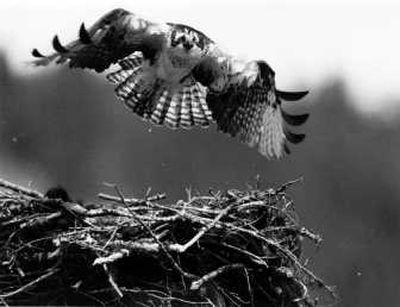Decline of Yellowstone Lake osprey linked to drop in native cutthroat

A “staggering” decline in ospreys on Yellowstone Lake is a consequence of a drastic reduction in the number of native cutthroat trout, the Yellowstone National Park ornithologists says.
Only nine nesting pairs of ospreys were observed on the lake last year and the population in that area appears to be declining “at a staggering rate,” said park ornithologist Terry McEneaney.
“I go out there and I see very few osprey anymore,” McEneaney said. “I used to see 20 or 30 in a day, and now I’m lucky to see a couple.”
Trumpeter swans, another of Yellowstone’s signature birds, also continue to decline, reaching some of their lowest numbers since the 1930s.
The number of swans in Yellowstone has dropped steadily since 1961 and now stands at 14, McEneaney said. One of the chief problems for osprey is that a key food, Yellowstone cutthroat trout, have been hit hard by non-native lake trout in recent years. At a spot on the lake where more than 70,000 cutthroat were counted in the 1970s, just 471 were tallied last year, the lowest number since record keeping began in 1945.
Other factors in the decline include a 2003 wildfire on Frank Island, in the middle of the lake, that burned 570 of the island’s 600 acres, wiping out nearly all the old-growth trees that were a popular spot for nesting ospreys.
In 1994, there were 25 pairs nesting on the island that produced 28 young. The nine pairs counted last year produced just three young.
That’s not to say ospreys around Yellowstone Lake are dying out, McEneaney said. It’s likely that they flew off and settled somewhere else, perhaps outside the park.
Overall, the population in Yellowstone in 2006 — 41 pairs producing 23 young — is the fourth-lowest production in the last 20 years of collecting detailed data, McEneaney said.
The park’s trumpeter swans have struggled as populations outside Yellowstone, which traditionally provided fresh recruits, have declined also. Predators are an issue, with wolves, bald eagles and grizzly bears limiting the population.
“It continues to be a bird on the edge,” McEneaney said.